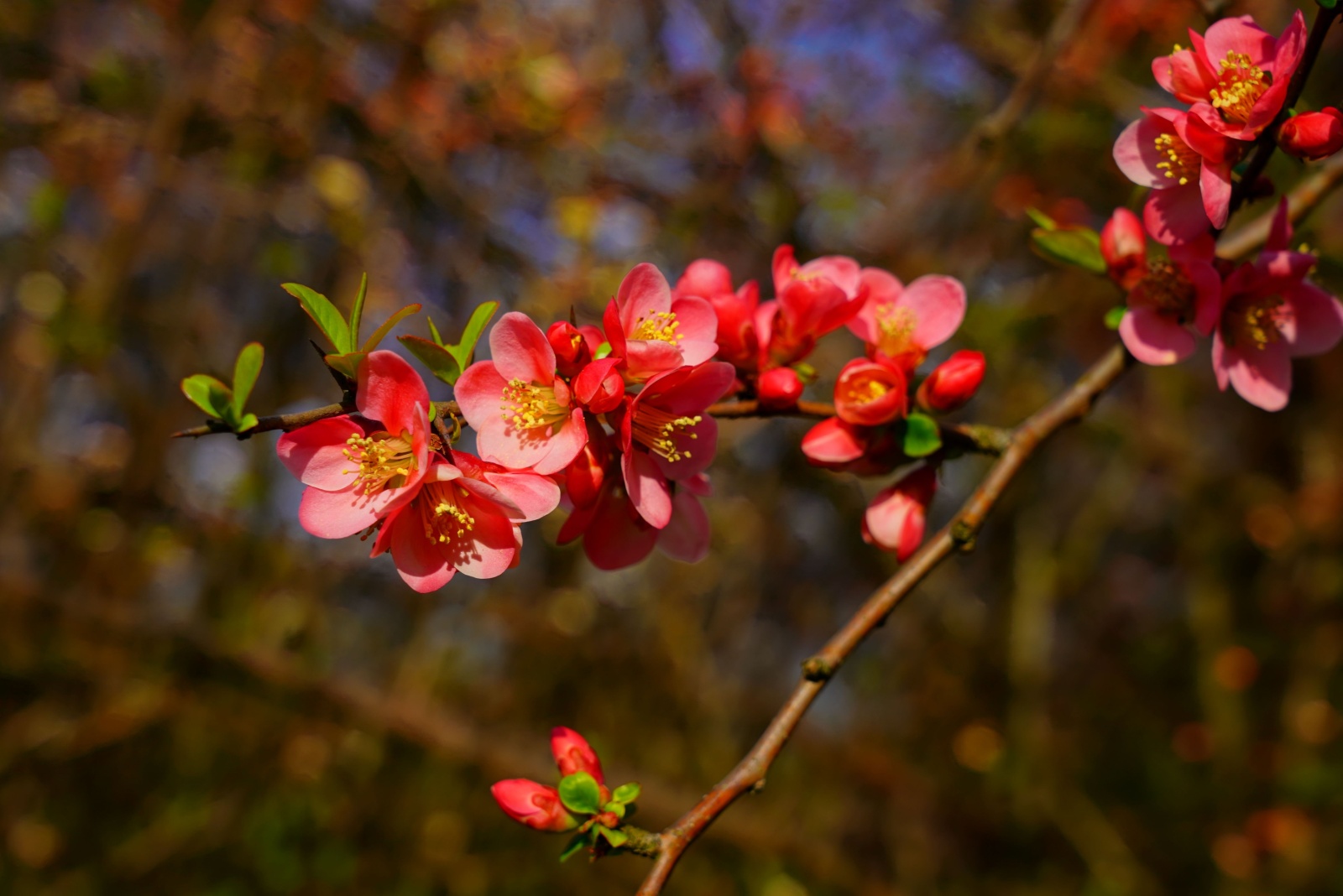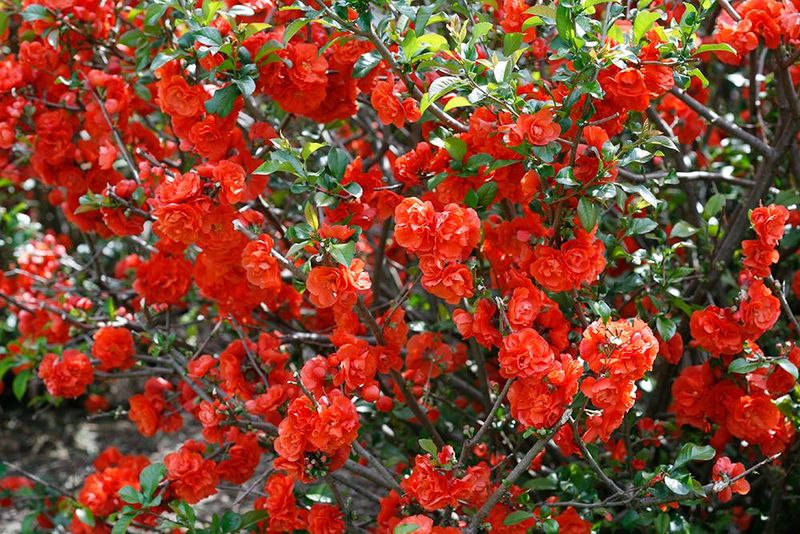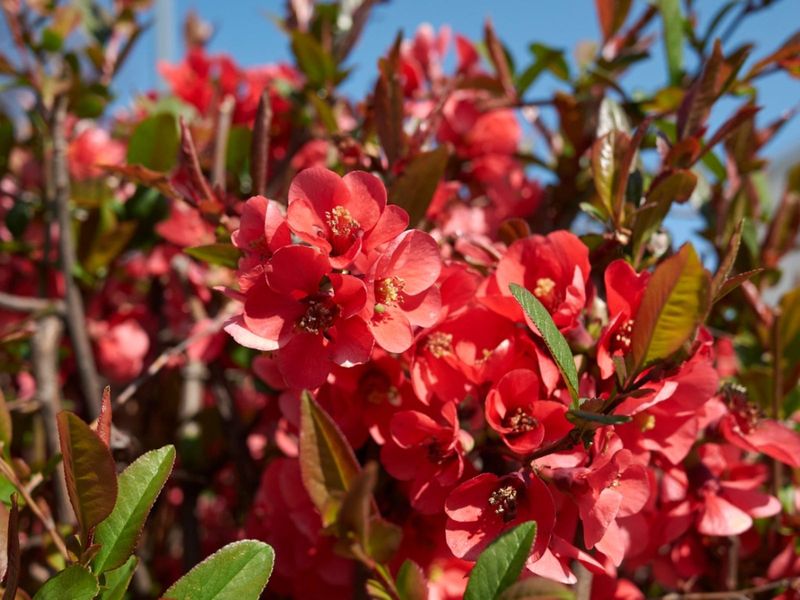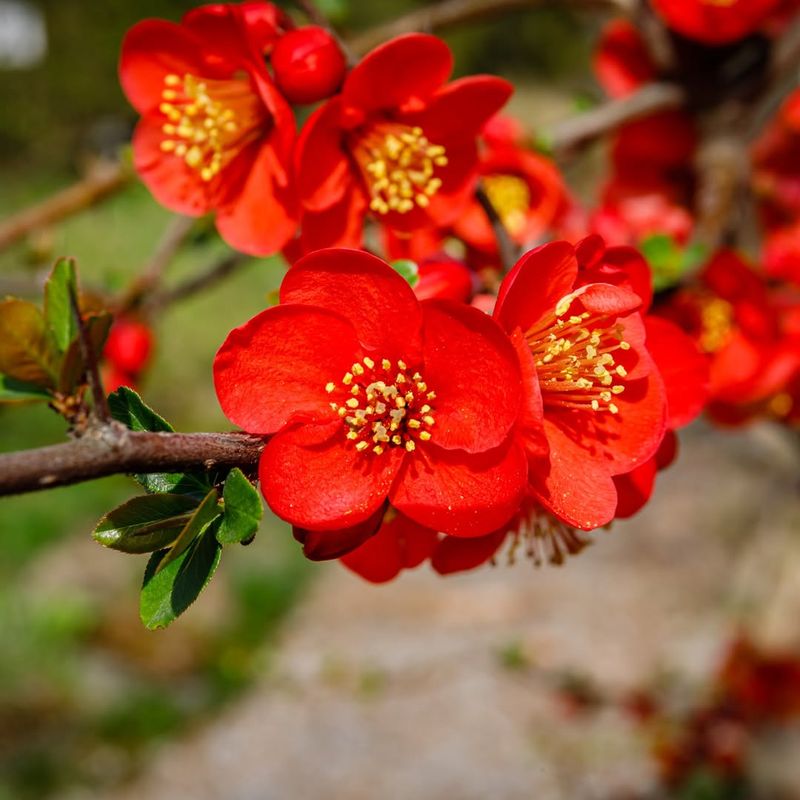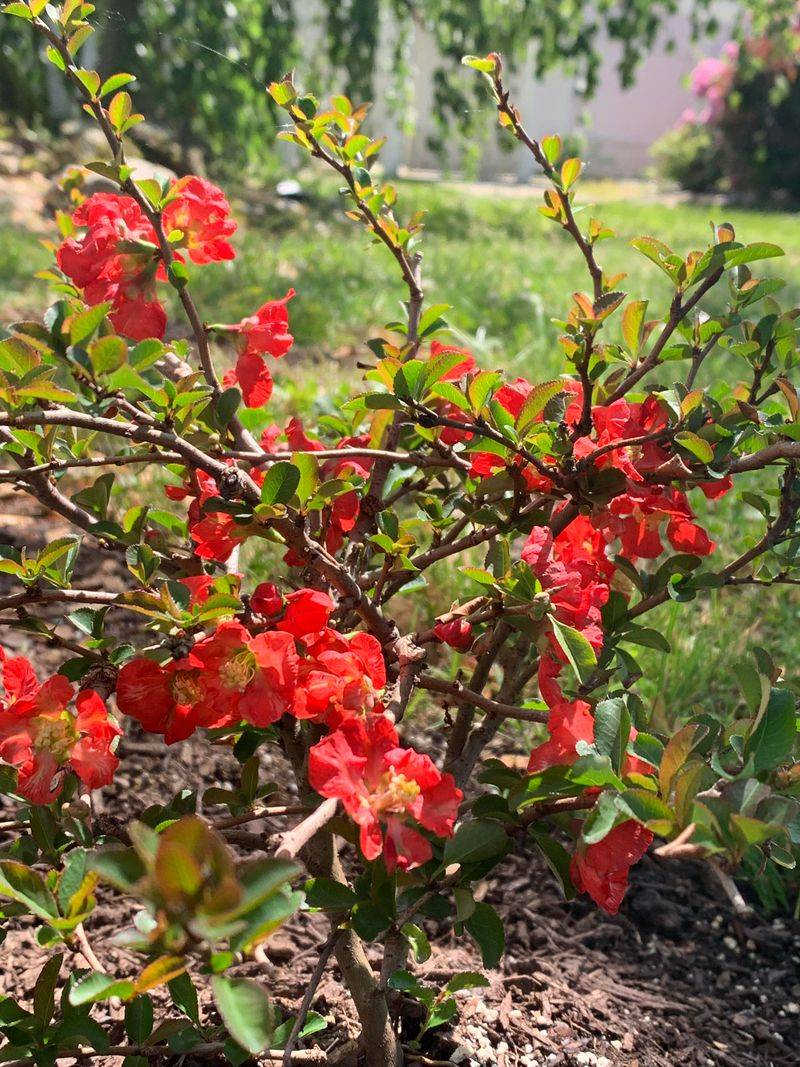Flowering quince is a spectacular shrub that brings brilliant red flowers to New York gardens each spring. This hardy plant thrives in our climate and offers way more than just pretty blooms.
Whether you have a tiny yard or a sprawling landscape, flowering quince deserves a spot in your garden for its beauty, toughness, and year-round appeal.
1. Early Spring Color Explosion
When winter finally loosens its grip on New York, flowering quince bursts into bloom before most other plants even wake up. Those brilliant red flowers appear as early as March, sometimes even poking through the last patches of snow.
Imagine stepping outside after months of gray and brown to see branches covered in cheerful scarlet blossoms. Your neighbors will definitely ask what that amazing plant is!
Few shrubs deliver such dramatic color this early in the season.
2. Tough Enough For New York Winters
New York winters can be brutal, but flowering quince laughs in the face of freezing temperatures and harsh winds. This shrub is rated hardy to Zone 4, which means it can handle temperatures down to negative 30 degrees Fahrenheit without breaking a sweat.
You won’t need to wrap it in burlap or fuss over winter protection like some fancier plants require. Once established, it comes back stronger every year.
That kind of reliability makes gardening so much easier.
3. Low Maintenance Garden Superstar
Forget about babying this plant with constant watering and fertilizing. Flowering quince practically takes care of itself once its roots settle into your garden soil.
It tolerates drought surprisingly well, resists most diseases, and doesn’t attract many pests. An occasional pruning to shape it and remove old wood is really all it needs.
Perfect for busy families or anyone who wants a gorgeous garden without spending every weekend doing yard work.
4. Attracts Pollinators To Your Yard
Those vibrant red flowers aren’t just pretty to look at—they’re like a welcome sign for hungry bees and other pollinators emerging from winter. Early-blooming plants provide crucial nectar when food sources are scarce.
By planting flowering quince, you’re helping support local pollinator populations that keep our gardens and ecosystems healthy. Watch bees buzz happily from blossom to blossom on sunny March mornings.
Your vegetable garden will thank you later with better harvests!
5. Creates A Natural Security Barrier
Here’s something most people don’t realize: flowering quince branches are covered with sharp thorns that make excellent natural fencing. Plant several shrubs together and you’ll create a beautiful barrier that discourages unwanted visitors, both human and animal.
Deer tend to avoid it because of those prickly branches, which is a huge bonus in areas where deer munch everything in sight.
Beauty and security in one package—that’s smart gardening right there.
6. Edible Fruit For Homemade Jams
After those stunning spring flowers fade, small apple-like fruits develop through summer and ripen in fall. While too hard and tart to eat raw, these quinces make absolutely delicious jellies, jams, and preserves when cooked with sugar.
The fragrance that fills your kitchen while cooking them is absolutely heavenly—like apples and roses combined. Many old-fashioned gardeners grew flowering quince specifically for this harvest.
Your homemade quince jelly makes wonderful holiday gifts too!
7. Four-Season Interest In Your Landscape
Unlike plants that only look good for a few weeks, flowering quince earns its space year-round. Spring brings those incredible red blooms, summer offers glossy green foliage, and fall displays colorful fruits and leaves.
Even winter has its charm when the interesting branching pattern creates architectural interest against snow. Smart gardeners love plants that work this hard.
You get constant beauty without planting something new for each season—that’s efficient landscaping at its finest.

